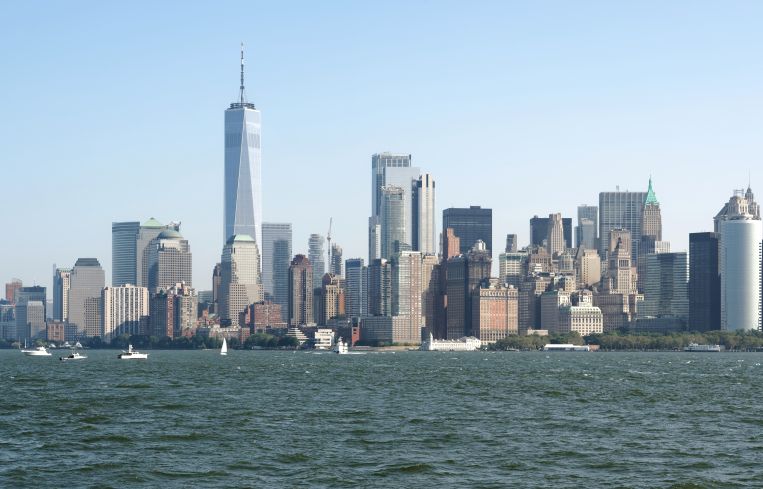Wave of Office Lease Expirations Set to Impact CMBS Market

Office vacancies nationwide reached an all-time high at the start of the year, and CRED iQ’s data shows roughly 217 million square feet of office space have leases with expiration dates in 2024 or 2025. As tenants regroup and resize their office footprints, CRED iQ explored the intersection of record vacancy rates with near- and medium-term lease expirations.
Downsizing and non-renewal by office tenants is a contributing factor to headwinds facing the office sector, which has been plagued by sustained growth of remote working and tenants’ need to shed space, reduce real estate costs, and right-size physical footprints during a period of economic uncertainty.
A high-level view of lease expirations provides a general sense, or foreboding in some instances, of the mechanics that the office sector needs to work through as the property type falls out of favor with lenders, investors and other commercial real estate industry constituents. Lease expiration analysis offers an important dimension to evaluate when and where the next pockets of elevated office distress will materialize.
Office collateral has been a primary contributor to incremental distress in CRE throughout 2023. CRED iQ’s distressed rate for CMBS office loans, which includes delinquent loans and specially serviced loans secured by office collateral, was 9.9 percent as of December 2023. Furthermore, the distressed rate for office collateral has more than doubled compared to 12 months prior.
CRED iQ examined over 866 million square feet for CMBS office and mixed-use collateral properties. For this exercise, CRED iQ focused on lease rollover over the next five-plus years. It should be noted that office collateral securing CMBS does not represent the entire office market, but rather serves as a proxy to identify challenges facing the larger universe of office properties.
Our analysis found that more than 500 million square feet of net rentable area (NRA) is scheduled to expire over the next five years for office and mixed-use properties secured by CMBS loans, and that 112 million square feet of office space is set to expire in 2024. Another 105 million square feet is also slated to expire in 2025 for a total of 217 million square feet of near-term rollover risks.
Lease expiration figures were further parsed by geographic location to provide a granular view by metropolitan statistical area (MSA). A detailed view of lease expirations by individual office markets helps identify which MSA vacancy rates are at risk of being stressed. The data was parsed to isolate the next two years and the next five years.
In both time frames, the New York region had the highest gross space in the country and the most leases scheduled to expire. More than 173 million square feet of leases in the New York region are scheduled to expire in through 2028, with 32 million square feet scheduled to expire in 2024 and 2025.
Other noteworthy regions with elevated lease rollover in the next two years include the markets of Los Angeles (15 million square feet), Chicago (12 million square feet), Philadelphia (9 million square feet) and San Francisco (8 million square feet), accounting for an aggregate 44 million square feet.
Major office assets to monitor in 2024
The $940 million loan secured by the Worldwide Plaza office tower in New York City will be facing increased vacancy in 2024 with 33 percent of the NRA scheduled to expire. The 2024 lease rollover is highly impacted by the second-largest tenant, Cravath, Swaine & Moore’s lease expiration on Aug. 31. The tenant currently represents 30 percent of the NRA and has confirmed it will be terminating its lease at expiration to downsize and relocate to Hudson Yards. Two additional top five tenants have leases scheduled to expire in the next five years including Worldwide Plaza Garage (6 percent NRA, 2027) and WNET.org (5 percent, 2026). The property was 91 percent occupied as of September 2023.
More than 1,500 leases from tenants that are the sole occupant of a property are scheduled to expire in the next five years. This represents 161 million square feet (19 percent) of the total NRA set to expire. Over 275 leases are scheduled to expire in the next two years, however the highest number expire in 2028.
The Google and Amazon office portfolio is backed by two sole-tenant office properties in the San Jose market. The Technology Corners property (700,000 square feet) and Moffett Towers Building D (357,000 square feet) are leased by Google and Amazon, respectively. Google accounts for 66 percent of the portfolio NRA with a lease expiration scheduled on Sept. 30, while Amazon’s lease expires on Feb. 29. Neither tenant has early termination options, however Google has a seven-year renewal option and Amazon has two seven-year renewal options. Servicer commentary indicates the borrower is negotiating with Google for a renewal. On top of the upcoming lease expirations, the $412.4 million loan is scheduled to mature this month.
To be fair, many tenants will renew or even expand footprints in certain office buildings. However, rising vacancy rates — in excess of 20 percent and even reaching 30 percent in certain markets — indicate a high level of risk that many tenants will downsize or fail to renew altogether. Lease expirations may have possibly favorable outcomes for office landlords, including a renewal or a new direct lease that resets rents higher if market conditions allow. However, high vacancies and downward pressures on net effective rents may lead to reductions in cash flow and trigger subsequent distressed scenarios.
Mike Haas is the founder and CEO of CRED iQ.


